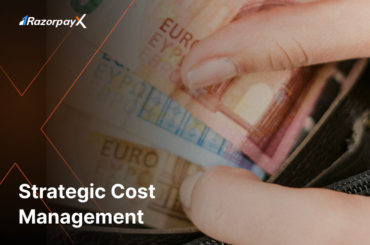A line of credit (LOC), also known as a credit line, is an agreement between a bank/financial institution and a borrower to provide access to funds on-demand. Under a credit line, the borrower can access funds whenever needed (provided the borrowings do not exceed the maximum limit fixed by the lender) and repay them over time.
Most credit lines function as a revolving facility—you can borrow money, spend it, repay the debt to replenish the limit and borrow again in a virtually never-ending cycle.
When you need access to instant liquidity during a financial emergency, having a credit line is incredibly useful. You can tap into it without going through the trouble of applying for a loan. Such credit lines are also available for both personal and business needs.
Table of Contents
How does a line of credit work?
A credit line works as a hybrid of a loan and a credit card. The lender approves a borrowing limit, and you get access to a pool of funds up to a specified limit.
You can keep borrowing in small instalments up to that limit, and there is no obligation to draw the entire amount in a single shot. You are also free to use the borrowed amounts to meet any financial need you may have—unlike traditional loans, lenders of credit lines do not monitor the end-use of the cash withdrawn.
Interest on line of credit
The interest for a credit line starts to accrue as soon as you borrow any amount. But it is payable only on the funds you have actually borrowed and not the overall loan limit. For example, if your credit line is INR 500,000 and you withdraw only INR 50,000, the interest is payable only on INR 50,000.
Line of credit: Draw period vs. repayment period
Every credit line has a ‘draw period’ and a ‘repayment period.’ Draw period refers to the time that you get to borrow the money. The exact duration of the draw period is specified in the credit line agreement. You can make minimum monthly payments during the draw period to reduce your debt liability and repay the interest. Some lenders also permit using a part of the payment towards repaying the principal and reset the limit for future borrowing.
When you enter the repayment period, you’re given a period of time within which you need to pay off the entire debt. Once you repay the amount, your credit limit replenishes, and you can dip into it repeatedly to keep borrowing.
The lender gets to decide the maximum credit limit, interest rate, and repayment schedule. These depend on several factors, including your credit history, source of income, and your creditworthiness.
What are the different types of lines of credit available?
There are different types of credit lines available in the market
Secured vs. unsecured
For a secured credit line, you need to offer collateral or security. In case you fail to repay the borrowed funds on time, the lender can seize the collateral and recoup the money advanced. The interest rate of a secured credit line is comparatively lower than an unsecured one. But the credit limit tends to be higher.
If a lender sanctions a credit line to you without asking for any collateral in return, it is known as an unsecured credit line. Such credit lines are riskier for lenders as there is a considerable risk of no repayment. As a result, the lender charges a higher interest rate and offers a lower credit limit.
Revolving vs. non-revolving
In revolving credit lines, the borrower is allowed a fixed amount of credit (known as the credit limit), from which they can borrow funds. As they repay the loans, the credit limit is replenished, thereby giving them the opportunity to borrow more.
For instance, you have a revolving credit line with a credit limit of INR 200,000. If you borrow INR 100,000, you have INR 100,000 left to max out the credit limit. However, if you pay back, say, INR50,000, you now have INR 150,000 more to borrow. In short, you have a credit source that you can always return back to.
Unlike revolving credit lines, once the non-revolving credit line has been used up, the borrower must re-apply to access funds again.
Personal vs. business
A personal credit line is one of several personal loans available from lenders obtained by borrowers for personal financial reasons. A business credit line is available from lenders for various business expenses such as making payroll or covering bills during a cash flow shortage. A business line of credit can serve as emergency working capital small business owners can tap when they need money.
Pros and cons of getting a line of credit
Here’s a snapshot of the benefits and the shortcomings of a line of credit:
Advantages of a line of credit:
- A credit line offers you the flexibility of withdrawing money multiple times without making a fresh application each time. Most lenders allow this without imposing any additional charges
- Once approved, the credit line stays valid for at least three years
- The interest rate for a credit line is cheaper than traditional loans. Moreover, unlike personal and business loans, the interest is also payable only on the amount you actually borrow and not the entire amount sanctioned
- Most lenders allow you to prepay the borrowed amounts before time without any fees or penalties.
- For SMEs, opting for a line of credit is a great way to control the cash flow throughout the year and take care of unexpected short-term funding needs. It also helps you to meet the ever-changing demands of your business in a hyper-competitive market
Disadvantages of a line of credit:
- The flexibility offered itself can be a huge shortcoming, especially if you are not disciplined about managing your finances. If you don’t regularly pay off the borrowed amounts, the interest may pile up
- If you borrow more than you can repay and fail to clear your debt on time, it can impact your credit score adversely
How do credit lines affect your credit score?
Credit scoring models consider many factors when calculating your credit scores.
- Your payment history, of course, matters most. If you open a credit line and always pay by the due date, the account might help you improve your credit scores. But if you make late payments — even on an occasional basis — that same credit line could hurt your scores instead.
- Requesting to increase your credit limit may also affect your credit score, indicating that you totally rely on credit and you are overburdened. It is advisable to avoid opting for a high limit on your credit card, unless you really need it.
- Many of us think that credit usage may lead to bad credit habits and unnecessary spending. So, we prefer not to use credit, even though we possess them. This kind of no transaction will make your credit file inactive and may bring down your credit score.
- Sometimes your credit report may contain faulty information due to wrong information or delayed reporting provided to CIBIL. This may bring down your credit score. So, it is always advisable to check your credit report/history for any errors at least at a gap of every 6 months
Are you looking to finance your small business through a line of credit?
Razorpay Line of Credit makes it convenient for your business to get instant access to an unsecured line of credit and manage your cash requirements at all times, especially when faced with an unexpected demand.
Here are a few benefits you can enjoy with Razorpay Line of Credit:
- Line set up in just 2 business days with 24*7 cash withdrawals
- No collateral. No hidden charges. No pre closure fees
- Interest rates starting at 1.5% per month
- Pay only on what you use & save on interest by repaying early
For example: If you withdraw INR 100,000 at 1.5% and repay in 20 days, you pay only INR 1000 as interest. - Get 100% flexibility & repay in easy EMIs or manually from Line of credit dashboard; use your line again without a new application for every withdrawal.
Don’t let your business suffer due to a lack of funds. Keep borrowing and keep growing!
FAQs on Razorpay Line of Credit
1. Who is eligible for the product?
We are currently serving businesses with Annual turnover of 20 lakhs or more and operating for at least 12 months.
2. What are the documents required to avail the product?
We’ll need the following documents
- Bank statement of your primary bank account
- Major shareholder KYC documents
- Business KYC documents
3. When can I withdraw cash?
You can withdraw cash as soon as your account is active. Just login to your account, select the amount you want to withdraw and confirm the repayment details to initiate the withdrawal.
4. What is the repayment process?
We collect NACH to help you with timely repayments and keep your account in good standing. We also have manual repayment option on dashboard, for you to pay early and save on interest.
5. How can I reduce my interest charges?
We don’t charge any pre-closure fees. We charge on daily interest rate model, so if you withdraw cash for 90 days and repay back in 10 days, you will be charged only 10 days interest.





